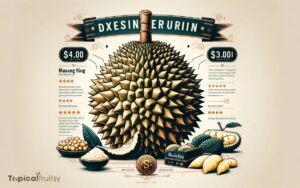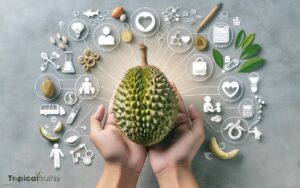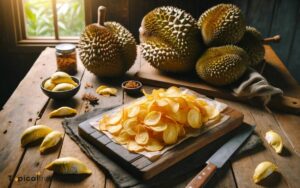What to Do with Unripe Durian? Unlock the Potential!
When you have an unripe durian, you can either ripen it using methods like ethylene exposure or employ it in various recipes that suit its firmer texture.
The seeds of durian can also be cooked and consumed. For natural ripening, storing the durian in the right conditions is crucial.
Determining the ripeness of a durian involves checking its aroma, husk, and stem. If it’s unripe, consider the following options:
It’s essential to provide the right environment for natural ripening, which includes a warm room temperature away from direct sunlight.
Discover the best techniques to ripen your unripe durian or transform it into delectable culinary creations.
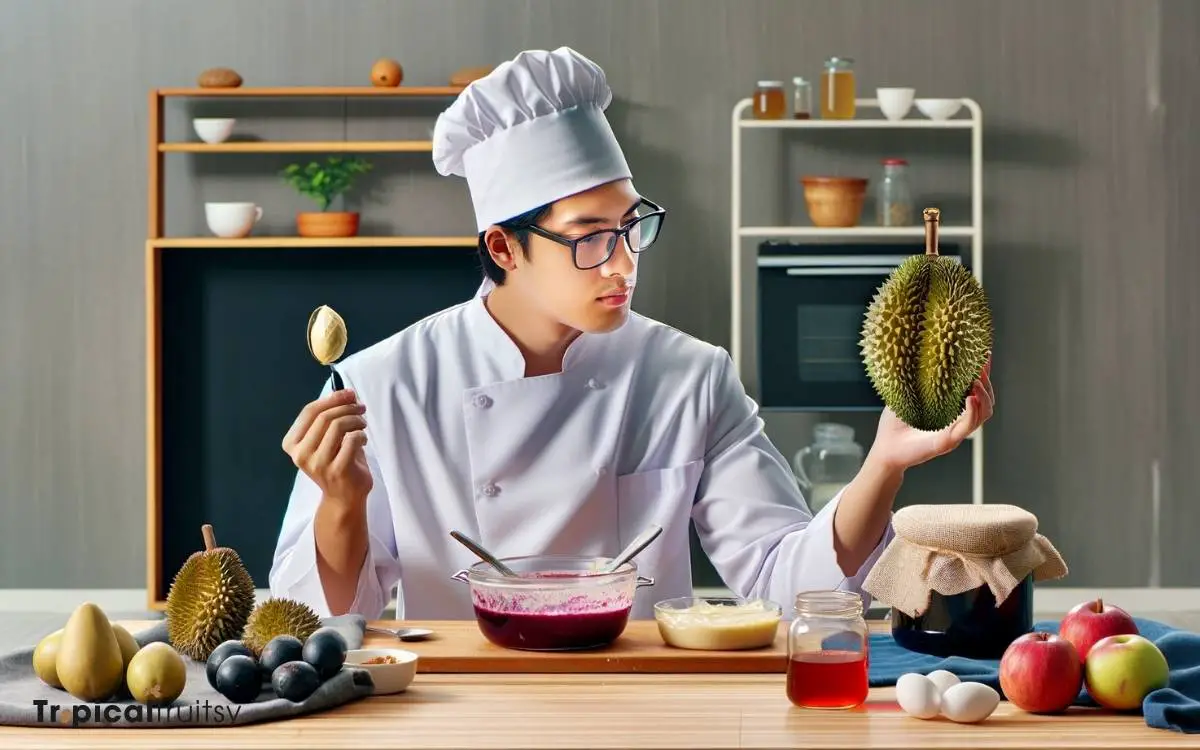
Key Takeaway
Effective Methods for Ripening Unripe Durian and Cooking Ideas
| Method | Description | Time Frame |
|---|---|---|
| Ethylene Ripening | Using ethylene gas to accelerate ripening | Few days to a week |
| Paper Bag with Ethylene Fruit | Placing durian in a bag with fruit like apples or bananas | 1-3 days |
| Cooking | Utilizing unripe durian flesh in recipes | Immediate use |
| Natural Ripening (Room Temp.) | Storing at warm room temperature | Several days to a week |
| Seed Preparation | Boiling or roasting to make durian seeds edible | Depends on cooking method |
Assessing Durian Ripeness
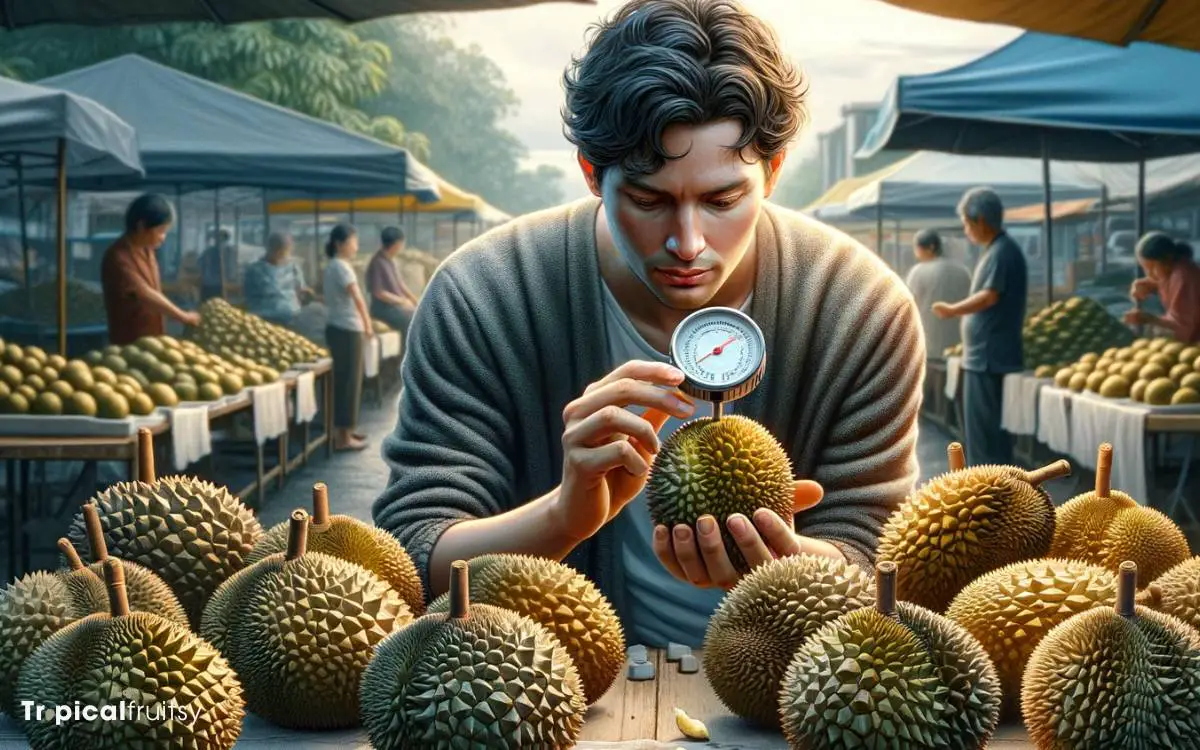
Before attempting any culinary application, accurately determining the ripeness of a durian is essential.
A methodical assessment begins with a visual inspection; a ripe durian typically exhibits a slight give under pressure, indicative of soft flesh within. The stem should appear dry and the husk may begin to crack, signaling natural maturation.
Olfactory analysis is critical: a mature durian emits a potent aroma, which intensifies as ripeness progresses. Auditory cues also play a role; shaking the fruit can reveal loosened seeds, a sign of peak ripeness.
For analytical certainty, employing a penetrometer to measure flesh firmness provides quantitative data, ensuring a systematic approach to ripeness evaluation. This technical scrutiny is paramount for culinary success with this temperamental fruit.
Ethylene Ripening Technique
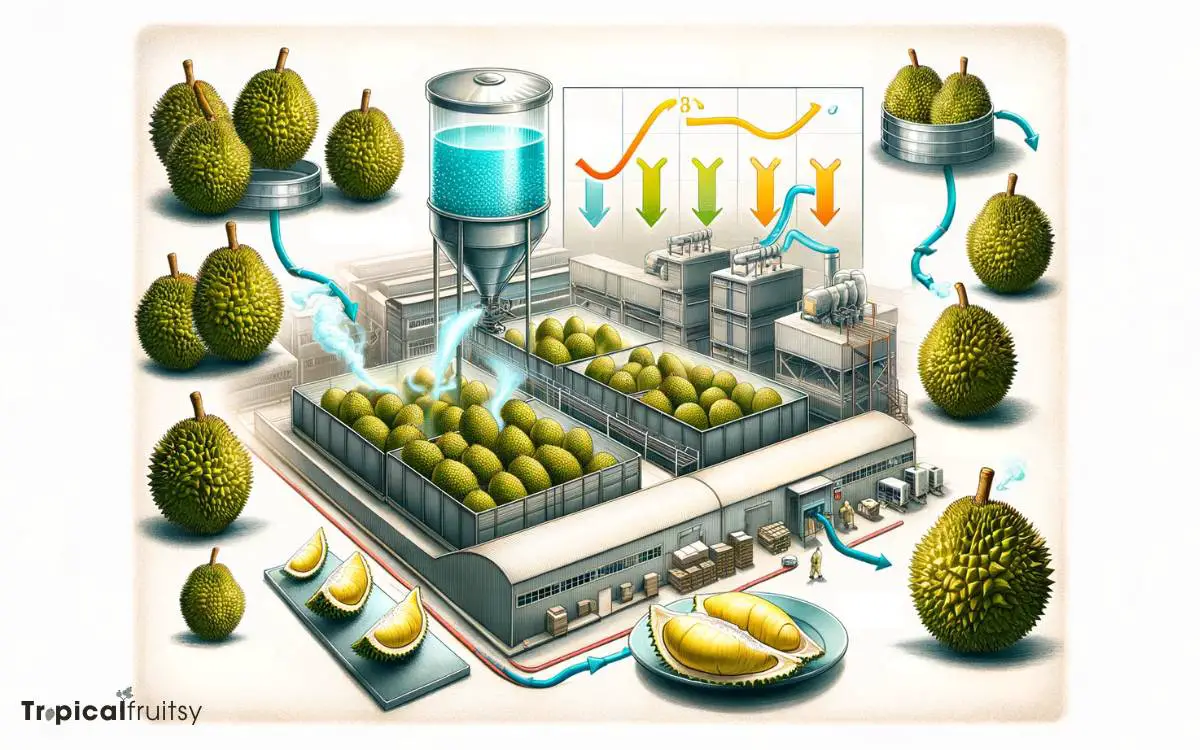
Upon assessing the ripeness of a durian and determining it to be underripe, the ethylene ripening technique offers a scientifically grounded method to expedite the maturation process.
This approach utilizes ethylene, a naturally occurring plant hormone that regulates fruit ripening. The application of external ethylene can synchronize and hasten ripening, making it a valuable tool in post-harvest fruit management.
To implement the ethylene ripening technique, follow these steps:
- Place the unripe durians in a sealed environment to concentrate the ethylene exposure.
- Introduce an ethylene source into the environment, such as ethylene gas or an ethylene-producing substance.
- Maintain the temperature within the range of 20°C to 25°C to optimize the ripening conditions.
- Monitor the fruit regularly to prevent over-ripening, which can negatively impact texture and taste.
Paper Bag Ripening Method
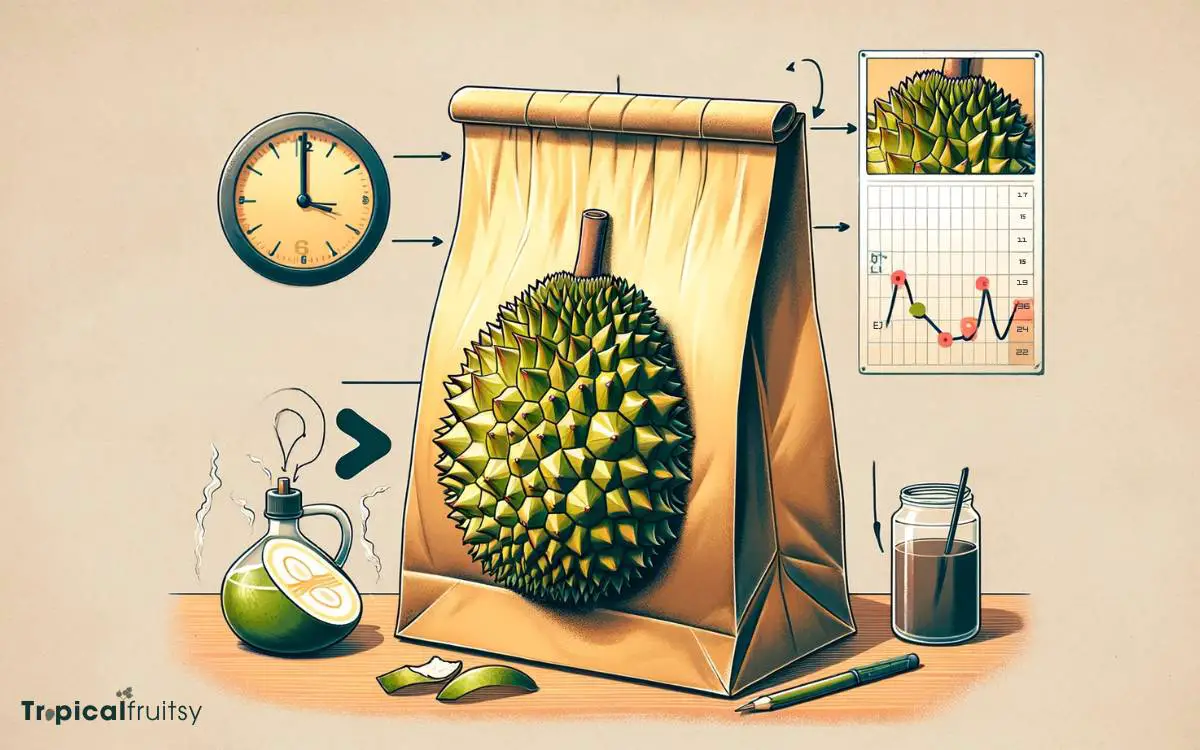
The paper bag ripening method for durian exploits the fruit’s natural release of ethylene gas, a ripening agent, by creating a confined environment to concentrate the gas around the fruit.
This method requires careful monitoring of the time duration to avoid over-ripening, which can lead to an undesirable texture and flavor profile.
Additionally, maintaining an optimal temperature within the bag is critical to ensure a uniform ripening process without compromising the fruit’s quality.
Ethylene Gas Effect
Utilizing the ethylene gas produced by certain fruits, placing an unripe durian in a paper bag can accelerate its ripening process.
This method leverages the natural ripening hormone, ethylene, which is a simple alkene hydrocarbon gas acting as a plant hormone.
When contained within the confines of a paper bag, the concentration of ethylene around the durian increases, thereby enhancing the ripening mechanism.
- Place the unripe durian in a paper bag.
- Add an ethylene-producing fruit, such as an apple or banana, to the bag.
- Seal the bag loosely to allow for air exchange yet maintain ethylene concentration.
- Monitor the durian daily for signs of ripening, which typically includes a change in the fruit’s firmness and the development of a strong aroma.
Time Duration
One should expect the durian to ripen within several days when employing the paper bag method, with the exact timing varying depending on the initial ripeness and ambient temperature.
This method leverages the natural release of ethylene gas, which is a plant hormone that accelerates ripening. The concentration of ethylene within the confined space of a paper bag enhances the ripening process.
A durian that is slightly underripe may require approximately two to three days to reach optimal ripeness. However, if the durian is significantly unripe, or if the ambient temperature is lower, the ripening process may extend to a week or more.
Careful monitoring is advised, as over-ripening can occur, leading to a decline in texture and flavor quality.
Temperature Considerations
Temperature plays a crucial role in the paper bag ripening method. Warmer conditions generally accelerate the process, while cooler temperatures may slow it down.
To facilitate a controlled ripening environment for durians, it is important to monitor and adjust ambient temperatures within certain parameters.
- Optimal Temperature Range: Maintain an ambient temperature between 70°F to 75°F (21°C to 24°C) to promote efficient enzymatic activity and gas exchange.
- Avoiding Cold Temperatures: Temperatures below 60°F (15°C) can impede the ripening process and lead to inconsistent fruit quality.
- Monitoring Heat: Excessive heat above 77°F (25°C) may lead to over-ripening or spoilage.
- Consistency: Ensure a consistent temperature to avoid fluctuations that can stress the fruit and affect the ripening process.
Utilizing Unripe Durian Flesh
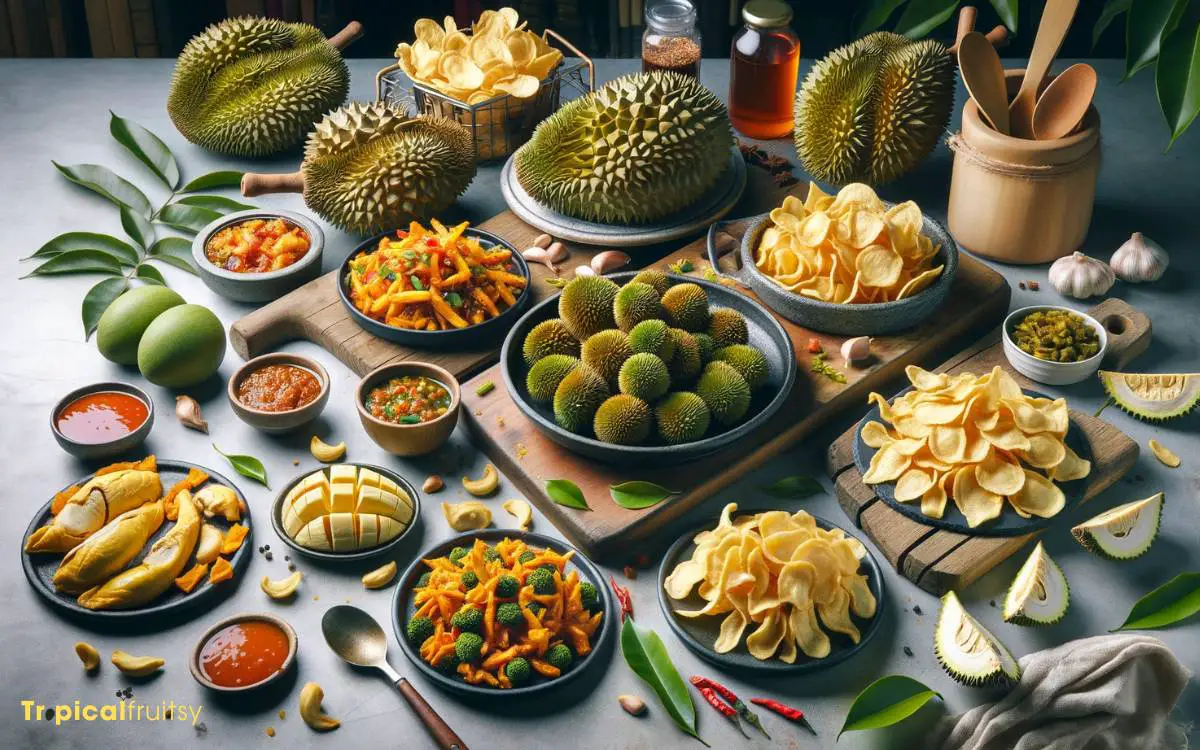
Before discarding unripe durian flesh, consider the various culinary applications it offers, ranging from savory dishes to unique desserts.
The texture of unripe durian is firmer than its ripe counterpart, making it suitable for cooking processes that require structural integrity, such as sautéing and grilling.
Its less pronounced flavor profile allows it to absorb spices and marinades deeply, thus it can be incorporated into a plethora of recipes as a meat substitute or a flavor enhancer.
The culinary versatility of unripe durian flesh is underpinned by its adaptability in texture and taste, providing a unique ingredient for experimental gastronomy.
To maximize its potential, meticulous preparation and pairing with complementary ingredients are crucial.
This exploration of unripe durian flesh paves the way for an examination of another component often overlooked: cooking with durian seeds.
Cooking With Durian Seeds
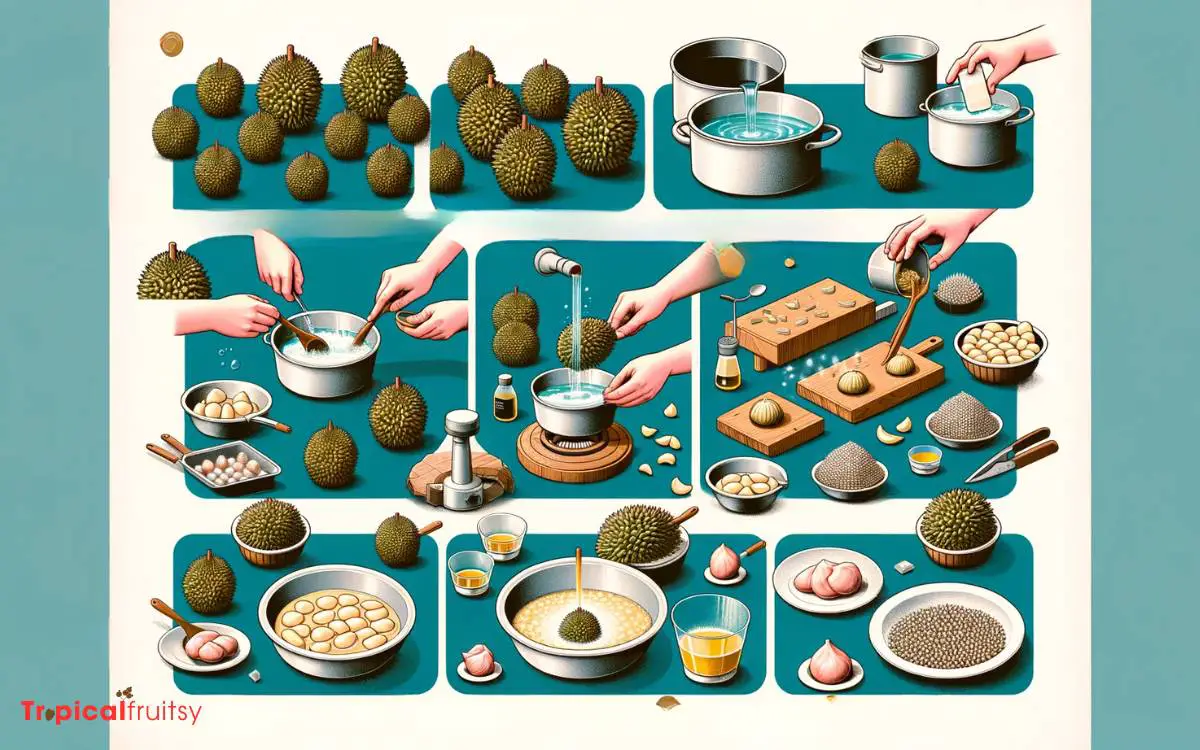
How can the often-discarded durian seeds be transformed into a valuable culinary component through proper preparation and cooking techniques?
By following a systematic approach, these seeds can be utilized to contribute nutritional value and texture to various dishes.
Here is an analytical breakdown of the process:
- Boiling: First, durian seeds must be boiled to soften their texture and neutralize any antinutritional factors, making them safe for consumption.
- Peeling: Once cooled, the outer layer can be peeled off to reveal the edible inner seed.
- Slicing/Dicing: The seeds can then be methodically sliced or diced, depending on the desired culinary application.
- Cooking: Finally, the prepared seeds can be incorporated into recipes, either as a substitute for starchy vegetables or as a unique ingredient in its own right.
Durian-Based Concoctions
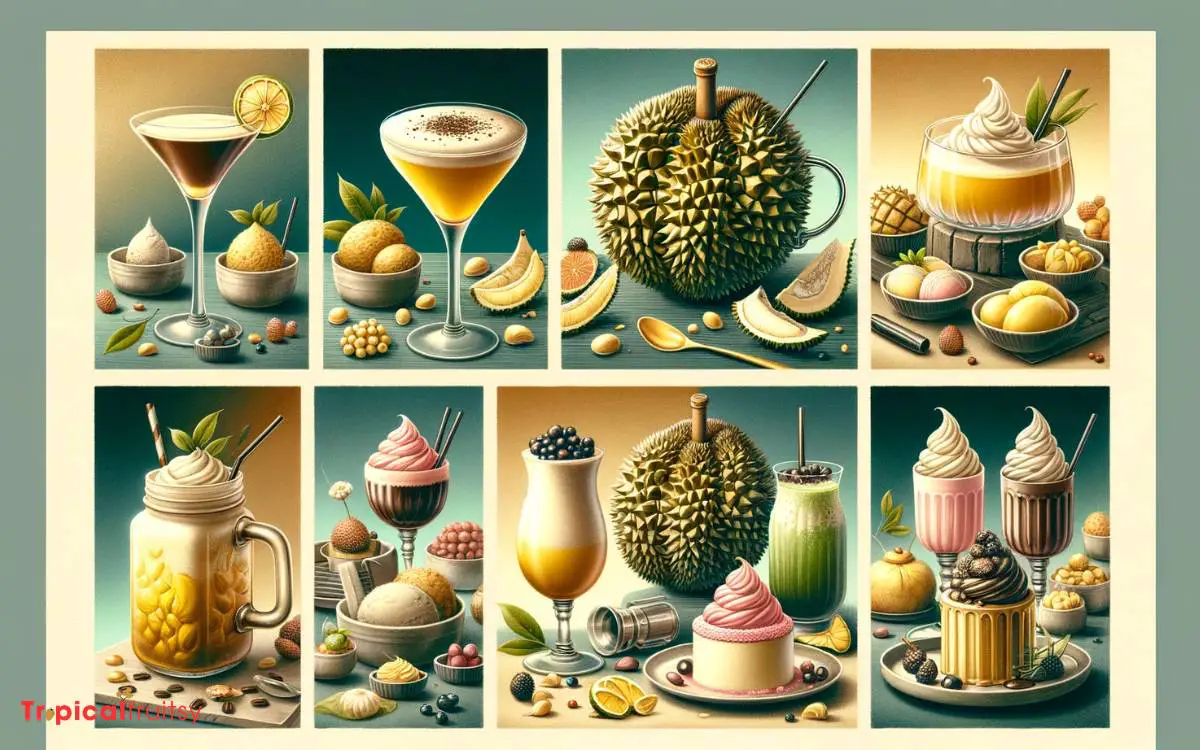
Exploring the culinary potential of unripe durian extends to the realm of durian-based concoctions, where both cooking methods and flavor pairings are pivotal.
The transformation of unripe durian’s distinct taste profile requires precise cooking techniques, which can mitigate its pungency while enhancing its unique flavors.
Identifying compatible flavor pairings is essential in creating balanced dishes, as the complexity of durian can either complement or overpower accompanying ingredients.
Cooking Methods
We can transform unripe durian into a variety of culinary delights using specific cooking techniques that cater to its unique texture and flavor profile.
These methods exploit the firmer flesh of the unripe fruit, which can withstand higher cooking temperatures and longer cooking times than ripe durian.
To illustrate, consider the following culinary applications:
- Sautéing: Unripe durian can be sautéed with aromatics to soften its texture and infuse it with savory flavors.
- Braising: The fruit benefits from slow cooking in a flavorful liquid, enhancing its taste and tenderness.
- Baking: Incorporated into cakes or pastries, unripe durian provides structure and a subtle flavor complexity.
- Frying: Durian fritters, where the fruit is coated and fried, offer a crispy exterior with a milder interior.
These methods set the stage for exploring various flavor pairings that complement or contrast the durian’s inherent qualities.
Flavor Pairings
Pairing unripe durian with complementary flavors can elevate it into exquisite culinary creations. The analytical approach to flavor synthesis necessitates a consideration of durian’s unique flavor profile, which, when unripe, is less intense but still distinct.
It possesses a slightly astringent and sour undertone, making it amenable to pairing with ingredients that have sweet, creamy, or even umami-rich characteristics.
Methodically creating durian-based concoctions involves identifying components that either contrast or harmonize with its flavor.
For instance, the creaminess of coconut milk can balance the durian’s tartness, while the incorporation of pungent herbs like mint may introduce a refreshing counterpoint.
The technical aspect of flavor pairing also requires attention to the textural interplay, ensuring that the final preparation is pleasing to the palate.
Storing Unripe Durian Properly
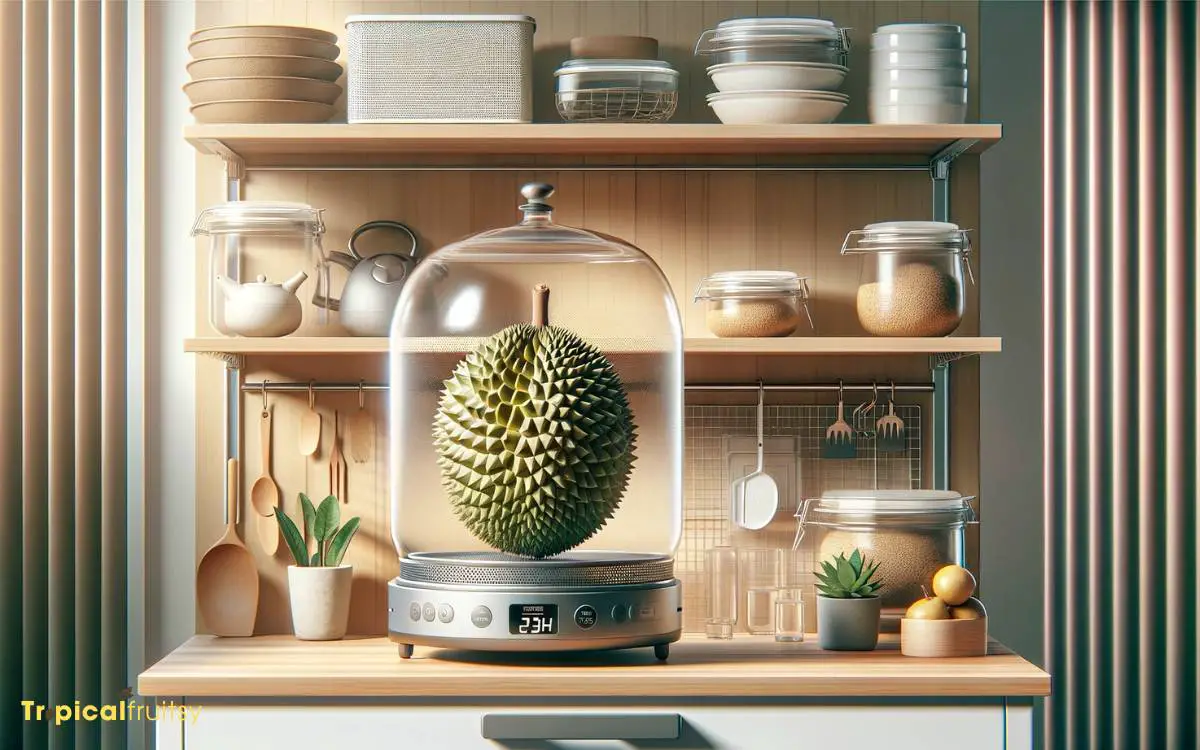
Proper storage of an unripe durian is essential for maintaining its quality and ensuring it ripens optimally.
To achieve this, one must approach the storage process with precision, taking into account factors that affect the durian’s ripening stages.
The following list provides a systematic approach to storing unripe durian:
- Place the durian in a cool, well-ventilated area to prevent the accumulation of ethylene gas and reduce the risk of premature spoilage.
- Avoid direct sunlight, as excessive heat can lead to uneven ripening and potential spoilage.
- Do not refrigerate unripe durian; cold temperatures can halt the ripening process and alter texture and flavor.
- Check the fruit regularly for signs of ripening, such as a stronger aroma and slight softening, to determine the optimal consumption time.
Conclusion
In the realm of tropical fruits, the durian reigns with a formidable presence, yet its ripeness is paramount to its culinary acceptability.
Methods such as ethylene and paper bag ripening serve as catalysts in the maturation symphony, transforming the unripe into the delectable.
Unripe durians, nonetheless, find purpose in varied culinary applications, from the flesh to the seeds.
Proper storage ensures the longevity of this thorny gem, awaiting the metamorphosis to its revered state of ripeness.


